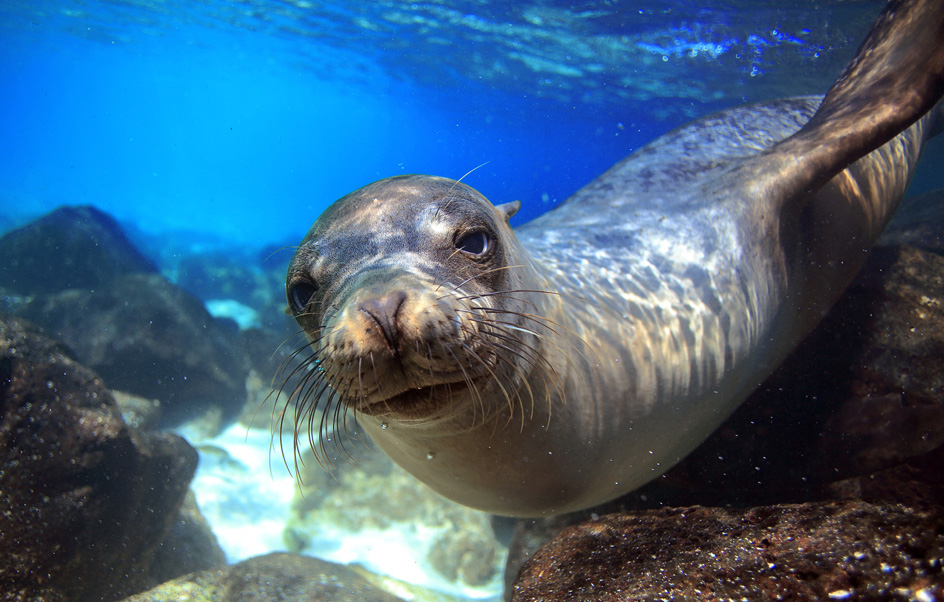
Sea lion is a large ocean mammal with four flippers. Sea lions are pinnipeds, a group of animals that also includes seals and the walrus. There are several species (kinds) of sea lions.
A sea lion has four large, paddlelike flippers. The flippers and sleek body of the animal enable it to swim quickly and gracefully. A thick layer of fat called blubber helps to keep a sea lion warm. A sea lion has slitlike nostrils that close underwater. The sea lion’s large eyes provide good vision, especially underwater. The animal’s snout has long whiskers that help the sea lion find prey in dim light.
The size of sea lions varies by species and sex. Generally, males may reach about 6 to 11 feet (1.8 to 3.4 meters) long. They may weigh 400 to 2,200 pounds (180 to 1,000 kilograms). Females are much smaller. The Steller sea lion is the largest kind of sea lion. The Galapagos sea lion is the smallest.
Sea lions dive to hunt for food. Most sea lions feed on fish and squid. Some can dive to depths greater than 600 feet (180 meters). Adult sea lions are too large for most animals to attack. But younger sea lions are hunted by killer whales and sharks.
Sea lions live in groups, especially during the breeding season. Males compete for territories along the shore. A mature male typically mates with several females. Together with their offspring, such a group is known as a harem. Females normally give birth to a single pup every breeding season.
Many sea lion species have fallen in numbers because of human activities, especially hunting. Numbers of the California sea lion fell in the 1800’s, mostly because of hunting. They recovered in the 1900’s after the sea lion became protected by law. The Galapagos sea lion is endangered. Threats to its survival include disease and dogs that people introduced to the Galapagos Islands. The Steller sea lion also is threatened. Scientists are not certain why its numbers have fallen, though commercial fishing has probably contributed. The Australian sea lion also is endangered. Its numbers never recovered from past hunting, and commercial fishing continues to cause accidental deaths. The New Zealand sea lion, also called Hooker’s sea lion, is considered vulnerable to extinction. It is threatened by disease and commercial fishing. The Japanese sea lion was hunted to extinction in the 1900’s. The South American sea lion is not considered threatened. Laws now protect sea lions in most of the areas where they live.
See also California sea lion ; Seal .
